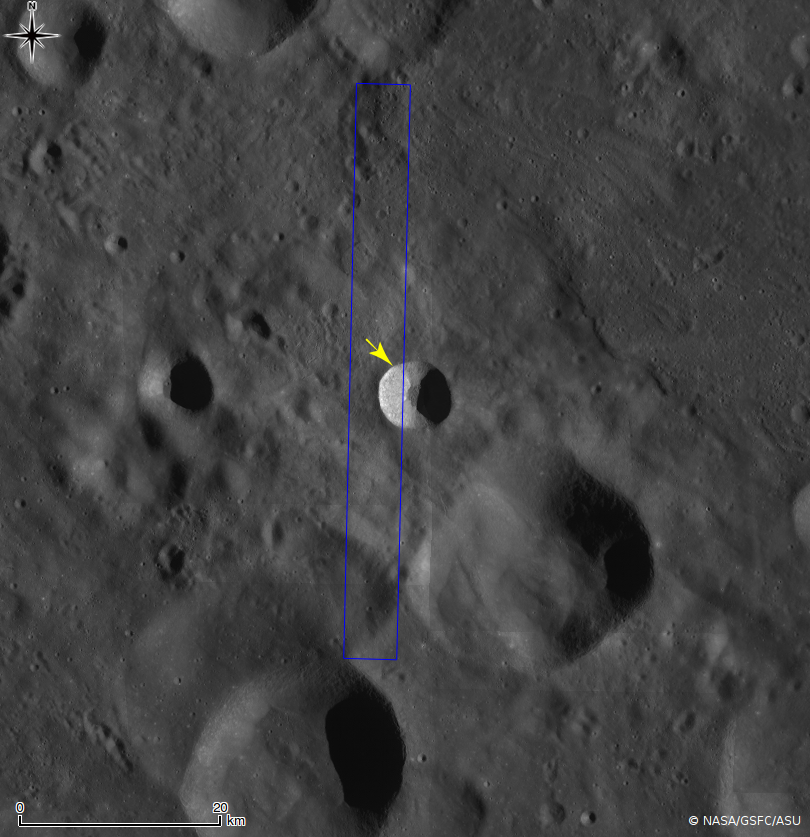
The opening image reveals the northwestern portion of the steep wall inside an unnamed young crater (6.8 km in diameter, the same crater in Tuesday's Featured Image). The upper left corner of this image, the relatively smooth part, corresponds to the outer gently sloping surface, and the rest of the image is the interior wall.
This steep surface displays very complicated forms, likely due original flow of impact melt down the walls, perhaps in places modified by small scale collapses. Several spots indicated with arrows show the contact between relatively smooth surface materials, probably impact melts, and sharp craggy edges. Are the smooth parts really impact melt? Or perhaps they are surfaces from which hardened impact melt slipped down. What we do know is that enormous amounts of impact melt were splashed around inside and outside the crater, a violent scene we can hardly imagine. New LROC data is unveiling the nature of impact melts through their shape, texture, distribution, quantity, and spectral reflectance.
Explore this fresh and complicated crater wall in full NAC frame!
Related posts:
Tycho Central Peak Spectacular!
Published by Hiroyuki Sato on 29 August 2013
